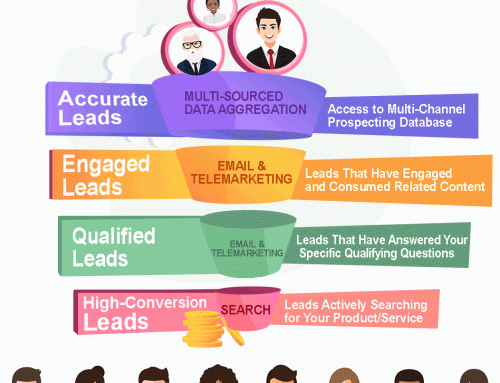Where do find your leads, or how do they find you? Which of your marketing channels – email, SEO, SEM, social media – is producing the most results? Which is falling behind in lead generation? Digital marketers can track conversions from some channels fairly easily, but others present a significant challenge. It’s difficult to sort buying signals from noise and even harder to ensure that your information on lead sources is accurate. Even if you’re swimming in data, you may not be able to translate it into successful lead gen strategies.
That’s where attribution comes in. Imposing order on chaotic data and defining precisely where your leads come from so you can find and qualify more of them is a primary goal for attribution. With attribution, you get accurate, repeatable, verifiable results, giving you the power to assign reliable cost-per-lead figures that are essential to a revenue marketing plan.
Defining Attribution
Attribution is a concise way of saying “this channel or marketing activity is responsible for bringing a particular lead to this point and state of sales readiness.” If you’ve ever filled out a survey in which a company asked how you learned about an offer, you’re seeing attribution in action. Such surveys are one way to get an idea of how leads find a business and make the conversion choices they do, but they’re only the beginning. With marketing automation and technology-driven attribution, you can learn far more about lead sources.
Integrating Your Marketing Strategy
Marketers often speak of a buying journey, and like any journey, there are forks in the road. Some of them you can’t control, such as shifts in your potential buyer’s budget; others, you directly influence. These include any conversion points at which you ask your leads to take action or speak with them directly, such as filling out subscription forms, attending webinars, or downloading white papers.
At any of these points, leads could pull back and take the other path in their buying journey. Attribution attempts to discover why some leads drop out and others forge ahead so you can encourage more of the latter. That process can only take place when you’re able to see the whole journey at a glance in a fully integrated marketing system that includes CRM data.
Which Attribution Method Is Best?
Marketers sometimes measure first-click attributions – that is, the first time a lead interacts with a company – while others measure by the last link clicked. Both first-click and last-click attribution methods have value, but they measure different aspects of successful conversion. First-click attribution tells you a great deal about leads who are encountering you for the first time, while last-click attribution is a valuable snapshot of what a lead was thinking immediately prior to making a key decision. Marketing automation software now allows for another option: probabilistic attribution. With probabilistic or algorithmic attribution, you’re able to assign value to multiple steps of the decision-making process.
Multi-Touch, Single Count
Your marketing efforts reach the same lead multiple times; how can attribution properly assign value to each touch? That’s a challenge for conventional marketing practices for two reasons. First, it’s subjective; marketers have traditionally made educated guesses about what motivates leads, and even an educated guess is sometimes incorrect. It’s also an issue because it leads to double-dipping on attribution counts. With multiple, unconnected points of contact, each one might be counted as a viable attribution, leading to inflated numbers that in turn result in inaccurate cost-per-lead calculations.
The solution here is to use a single, central marketing database to track referral traffic and map out every conversion point. With state-of-the-art marketing analytics, you’re able to cost out campaigns more accurately using the same system that also gathers contact information, scores leads, and stores account data for content customization.
Reports and Reviews
All the attribution data in the world doesn’t matter if you can’t access it in ways that make sense. Your analytics should generate reports that answer these key questions:
- What’s your true cost per lead?
- Which channels have generated the largest number of raw leads?
- Which campaigns have achieved the highest ROI?
- Which marketing activities are most closely correlated with sales?
All conversion metrics merit attention, but by focusing on those that have a direct relationship to lead generation, you’re able to prioritize intelligently.
© Reach Marketing LLC 2016 All Rights Reserved.






